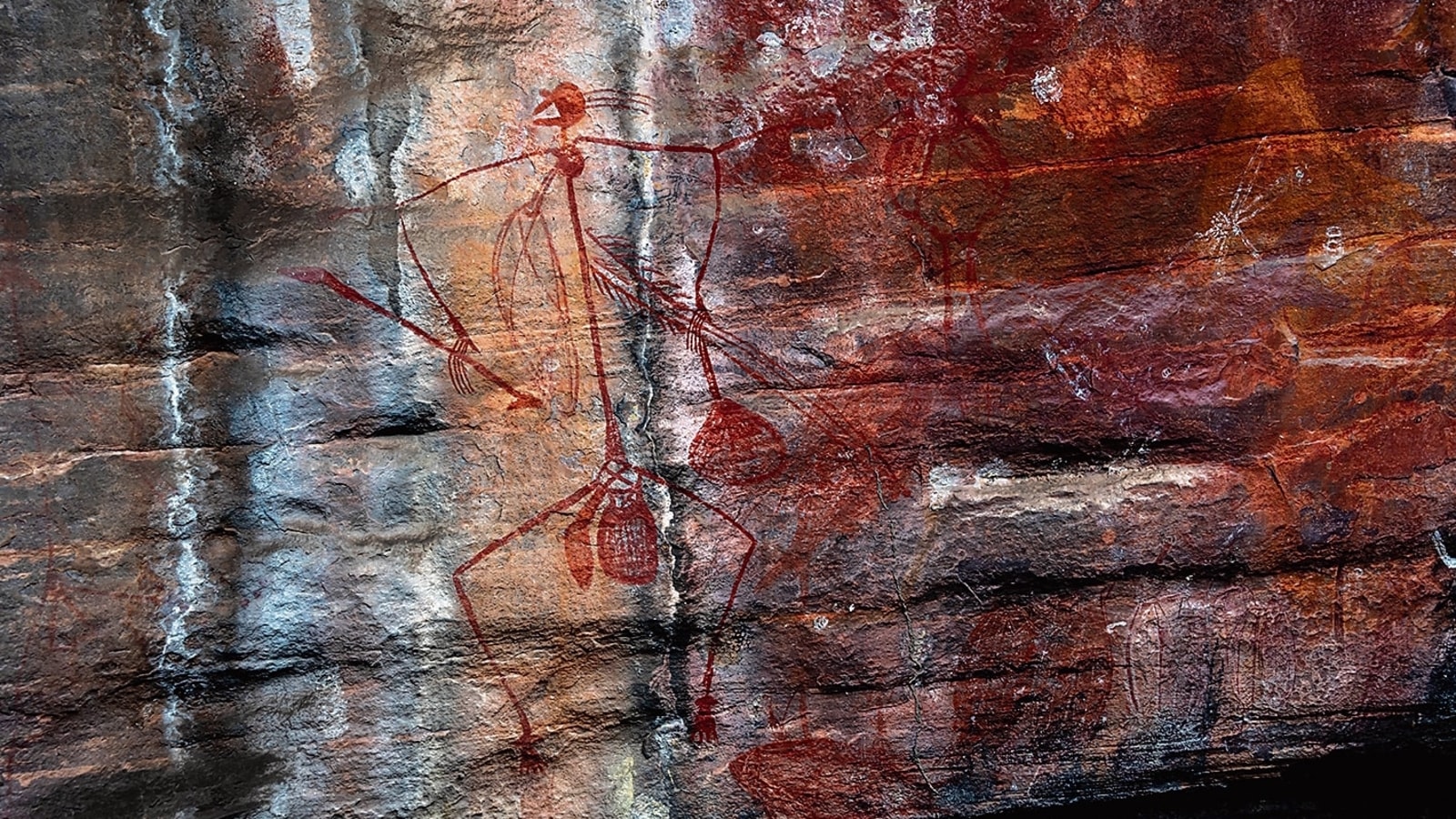During this time the young warriors called lmurran express themselves by painting images on the rocks. This is one of very few ongoing rock art traditions in the world, but it has gained almost no attention among rock art researchers. Rock art has been made for more than 60,000 years and it exists on every continent except the Antarctic. (Also read: History on the rocks: Tour the ancient marvels lurking in our midst )
Papua New Guinea and parts of Australia are among the few other places where new rock art is still being created, maintained or repainted like at the Samburu sites. Ancient rock art images offer glimpses of human thoughts and beliefs from times when no written records existed. But it is difficult to interpret these images since first hand information is lacking.
The ongoing Samburu rock art tradition, therefore, presents a unique chance to know where, when and why rock art was created. Linnaeus University in Sweden and the University of Western Australia initiated a community-led project together with the Samburu to learn about this tradition. The first outcomes of the project were recently published in our research paper. Rock art researchers tend to think about images as representing rituals and myths.
In contrast, our project has revealed that the current Samburu rock art tradition commemorates real-life events and is made as a leisure activity.
Samburu warriors and rock art
At the age of 15, Samburu boys leave their villages and go through initiation rituals which mark the passing from childhood to warriorhood. During the two month initiation period they learn about their protective duties.
As young warriors, lmurran move from camp to camp and live in rock shelters or caves where they eat, relax, dance and sometimes arrange feasts. It is during these stays at the rock shelters that they create rock art. The images they paint commemorate real-life events related to the warrior life-world and they express the wishes and expectations of the young men.
It may be an animal they have seen or hunted, or a girl back home in the village. Dancing is an important part of Samburu culture and some paintings depict boys and girls dancing together. The images are made using red, white, yellow and black paint. Before the arrival of Europeans in the 1940s the artists preferred a pigment of red ochre, which was also used for smearing their hair and bodies.
The white colour was animal fat, which turns light when it dries. To make black paint they used charcoal. As a binder, all pigments were mixed with fat from slaughtered animals. Today, commercial paint is also used along with more traditional pigments.
When speaking to Samburu today, they often downplay the importance of rock art. The paintings are not talked about but are done for leisure. By interviewing current and former lmurran we found out that they were well aware of rock art sites made by previous generations. The oldest rock art the elders remembered was more than 150 years old.
When visiting the rock art sites we saw an intriguing relationship between rock art made by different generations of warriors. Present warriors are inspired by older art, but add their own memories and style, and sometimes also the names of the artists. The images become an inter-generational visual culture that reflects and recreates a warrior identity and lifestyle.
Samburu visual culture and rock art research
Another thing we learned from Samburu rock art is that the artists always have specific people, animals and objects in mind when making their drawings. This is not clearly expressed in the drawings as they lack identifying details.
Studying the images doesn’t reveal the artist’s intention: you need to talk to the artist to understand what they wanted their art to express. Many of the artworks reflect first hand experiences of the warriors. One example comes from Mount Ng’iro at South Horr. Here at least five generations of lmurran have created rock art. The most recent was created by two older brothers of a participant in our research, Lmapili Lengewa (26).
The brothers, Lpalani and Lejinai, were around 20 and 16 respectively when they made the paintings. Lmapili was present when the paintings were created, although he was too young at the time to be an lmurran. The brothers learned from studying older paintings, but their paintings were made to commemorate what they had experienced as newly inducted lmurran.
A bull figure, for example, depicts a bull they slaughtered and ate. At the time there were about five or six people in the shelter; most of them focused on preparing the food, while the two brothers created rock art. While there are indeed many rituals in Samburu culture, rock art is not part of such practices.
Certainly there are norms guiding the creation of the rock art, but the artist is free to express himself as long as the images reflect young men’s experiences. Being able to hear the artist’s own reflections, perspectives and stories about specific paintings is a unique opportunity for rock art researchers globally.
Our ongoing community-led project aims to learn more about Samburu lmurran life-worlds and to bring their stories to the world, also benefiting the local Samburu communities.
Follow more stories on Facebook & Twitter
This story has been published from a wire agency feed without modifications to the text. Only the headline has been changed.
Stay connected with us on social media platform for instant update click here to join our Twitter, & Facebook
We are now on Telegram. Click here to join our channel (@TechiUpdate) and stay updated with the latest Technology headlines.
For all the latest Art-Culture News Click Here

